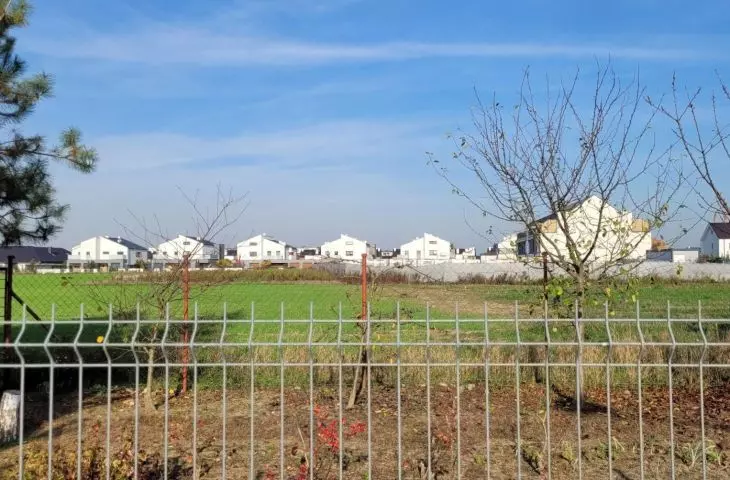Up Warsaw, Krakow, Gdansk. Wroclaw—stable. Down, among others: Łódź, Katowice, Poznań, Gdynia, Szczecin. Over the past two decades, many large cities have lost several to a dozen percent of their residents. At the same time, suburban beltways are swelling. There is no end in sight to the sprawl of Polish cities.
The outflow of residents of large cities has been a problem for years. The most common news is the rapid depopulation of Lodz and the steady growth in Krakow. But other large centers are also depopulating. What has changed over the past two decades? And how much? The polskawliczbach.pl portal compiled data for all Polish cities for 2002 and 2021 (data according to the Central Statistical Office) and published them in the ranking "The most rapidly depopulating cities in Poland." The comparison shows not only population loss within city limits.Suburbanization is also clearly visible , including around cities where the population has increased: Warsaw (107,305 residents; 6.4 percent) and Krakow (24,590; 3.2 percent).
Report on depopulation of Polish cities—Nearly 500 cities have lost up to 10 percent of their residents.
source: polskawliczbach.pl
suburban bounce
Wrocław also managed to avoid a decline, although—given the very small increase (by 0.6 percent)—one should speak of stability here. But already, for example, Siechnice, a suburb of Wroclaw, has recorded an exceptionally rapid jump—from 3928 to 9302 residents(an increase of 136 percent!). More modest increases are also evident in other towns in Wrocław County—Sobótka and Kąty Wrocławskie. Siechnice is such a notable exception, among other reasons, because it has been investing for several years in creating a new city center—including a very successful city hall designed by Zbigniew Maćkow.
Instead, a much greater imbalance can be seen in Poznańskie. The provincial capital has lost as many as 47,707 residents over the past two decades (a decline of 8.3 percent,!). Currently, 529,410 people live within the borders of Poznań. Instead, the sub-Poznan periphery, which includes the cities of Poznań County, led by Luboń (up nearly 28 percent, to 31,900 residents), Kórnik (23.7 percent) and Mosina (18.9 percent), is growing. In Poznan County, only Buk (down 5 percent) lost residents.
A sinking Lodz?
The situation is even different in Lodz. The province's capital depopulated the most among the large cities (40th position in the ranking) losing as many as 121,000 residents (a drop of 15.4 percent!). But the outflow also came from nearby cities Zgierz, Brzeziny, Pabianice. It is therefore difficult to speak of a growing periphery. The situation is similar, although not on such a large scale, in Bydgoszcz and its close vicinity. A loss was recorded both in Bydgoszcz (- 8.9 percent) and in the cities of neighboring counties, including Nakiel, Znin, Chelmno and Inowrocław. Slight increases were recorded only in the cities of Bydgoszcz County: Koronowo and Solec Kujawski.
Report on depopulation of Polish cities—In red circles—the most depopulated Polish cities (of various sizes)
source: polskawliczbach.pl
Residents are also declining on the Coast. Declines were recorded in Szczecin (-4.7 percent), Slupsk (as much as 10.7 percent less), Gdynia (-3.8 percent),Koszalin (-3.2 percent) and Sopot (-15.7 percent), among others. Instead, the population of Gdansk (1.69 percent) and Kolobrzeg (2 percent) increased slightly. The outflow is also visible in the Silesian region. Most cities scored declines (Katowice by as much as 11.7 percent!). On the clear plus side, however, there are a few: Mikolow, Środa Slaska and Imielin, among others. And what does the eastern wall look like? Lublin lost (- 6.1%), Białystok gained (+ 1.4%), a tiny surplus was recorded by Suwałki. The table does look impressive for Rzeszow (a 24.3% jump), but this is just the result of the January 2021 boundary change.
naming degradation
The loss of population of cities, the polskawliczbach.pl portal comments as follows:
The reasons for this are manifold, but among the most common are population migration to suburban areas, negative population growth and foreign emigration. If the downward trend continues (and all signs point to it) a number of cities may lose their designation as a large city, i.e. one with a population of 100,000 or more. Both Legnica and Kalisz cross the line by a small percentage of residents.
In the case of suburban areas, it is also important to remember that the ranking only talks about cities, not including residents of municipalities, which also often record large increases. It is to them that residents of large centers are steadily moving out, contributing to increasing suburbanization. The problem, noticed already at least 15 years ago, still has not seen a solution—unfavorable migrations are constantly facilitated by Polish regulations. A few months ago we cited data according to which areas in Poland that allow as many as 135 million people to live there (when we are talking about the provisions of studies of conditions and directions of spatial development) or 59 million (counting only the areas covered by local development plans) are designated for residential construction. This situation is supposed to be improved, among other things, by the forthcoming major amendment to the Law on Spatial Planning (we wrote about it recently here), but—despite the fact that its enactment was announced by the government at the end of last year—there is still quiet about the changes and their final form.




















